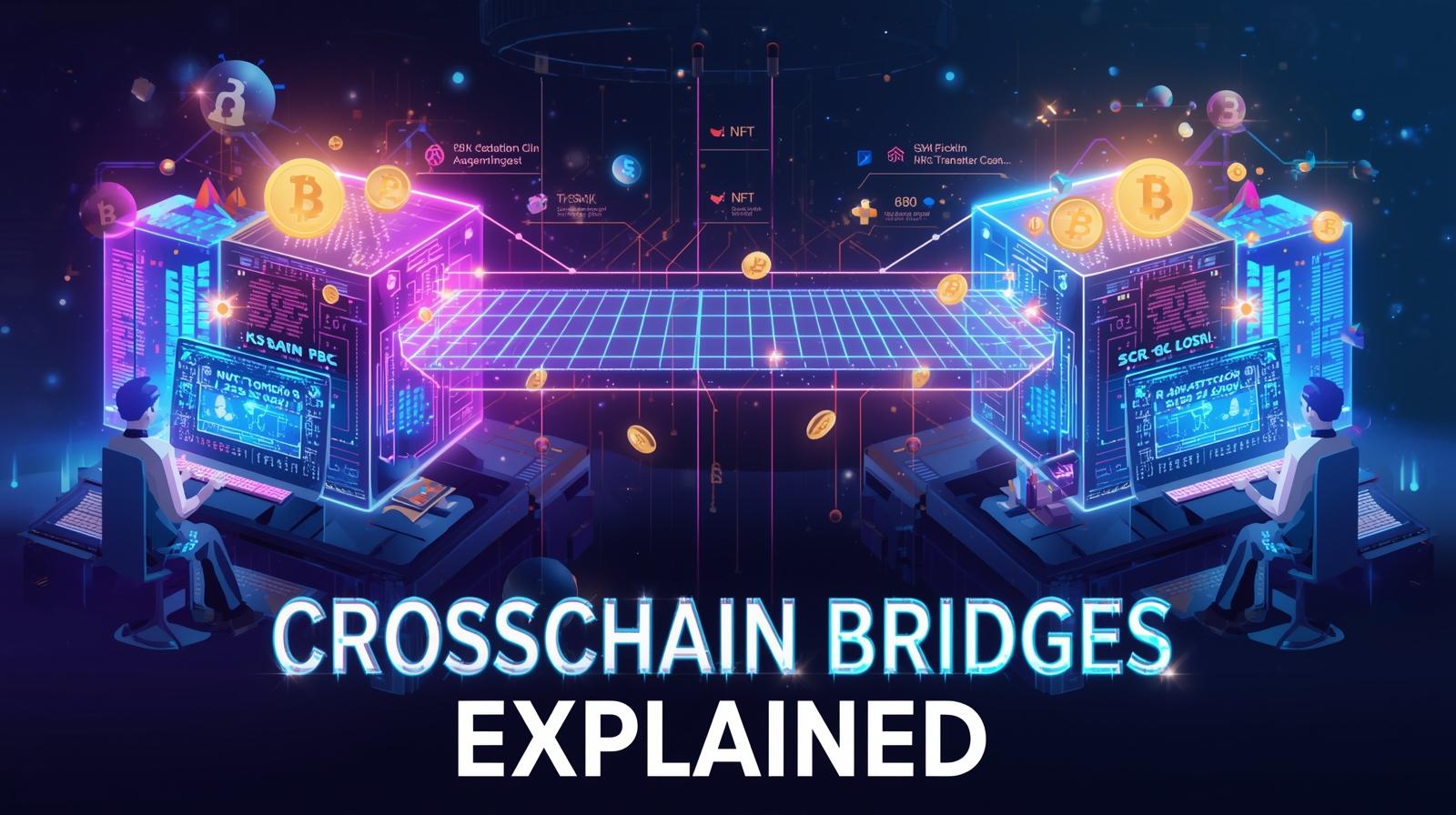In the rapidly evolving world of blockchain and cryptocurrencies, interoperability has become a crucial focus. Different blockchains have unique ecosystems, tokens, and smart contracts, but they often operate in isolation. This is where cross-chain bridges come into play—enabling assets, data, and information to flow seamlessly between networks.
What is a Cross-Chain Bridge?
A cross-chain bridge is a technology that allows users to transfer tokens or data from one blockchain to another without relying on a centralized exchange. For example, it lets you move Ethereum (ETH) from the Ethereum network to Binance Smart Chain (BSC) and use it in applications there.
Bridges can be trusted (centralized) or trustless (decentralized):
- Trusted Bridges: Managed by a central authority, faster, but users must trust the operator.
- Trustless Bridges: Operate using smart contracts and validators, minimizing central control, but sometimes slower and more complex.
How Do Cross-Chain Bridges Work?
Cross-chain bridges work by locking assets on the source blockchain and minting equivalent tokens on the target blockchain. When you want to move assets back, the bridge burns the tokens on the target chain and unlocks the original assets.
Example:
- You lock 1 ETH on Ethereum.
- The bridge mints 1 Wrapped ETH (WETH) on Binance Smart Chain.
- You can use WETH on BSC-enabled DeFi apps.
- When you return it, WETH is burned, and the original ETH is unlocked on Ethereum.
Some bridges also support cross-chain communication, allowing smart contracts to interact across multiple chains, which expands the possibilities for decentralized applications (dApps).
Benefits of Cross-Chain Bridges
- Interoperability: Bridges break down silos between blockchain networks.
- Liquidity Access: Users can move assets to chains with higher yield or better trading opportunities.
- DeFi Expansion: Enables more complex decentralized finance operations across multiple blockchains.
- Enhanced User Experience: Simplifies moving assets without multiple exchange accounts.
Risks and Challenges
While cross-chain bridges are powerful, they come with risks:
- Smart Contract Vulnerabilities: Exploitable code can lead to hacks.
- Centralization Risk: Trusted bridges can be compromised.
- High Fees: Multiple chains and conversions can increase transaction costs.
Recent hacks of popular bridges have highlighted the importance of security audits and choosing reputable solutions.
Popular Cross-Chain Bridges
- Wormhole: Connects Ethereum, Solana, Terra, and more.
- Polygon Bridge: Moves assets between Ethereum and Polygon.
- Avalanche Bridge: Facilitates transfers between Ethereum and Avalanche.
- Multichain (formerly Anyswap): A multi-chain bridge supporting dozens of networks.
The Future of Cross-Chain Technology
As blockchain adoption grows, cross-chain interoperability will become the backbone of a multi-chain future. Developers are working on more secure, faster, and decentralized bridges, and some layer-2 solutions are integrating native cross-chain functionality.
Bridges are not just about moving tokens—they’re about enabling a truly interconnected blockchain ecosystem, where assets, data, and applications can interact freely.



